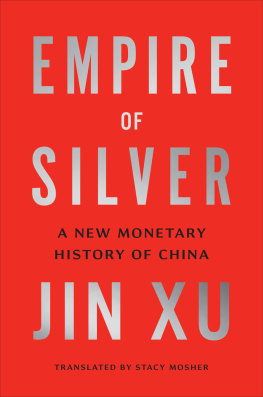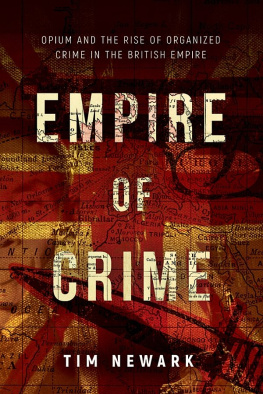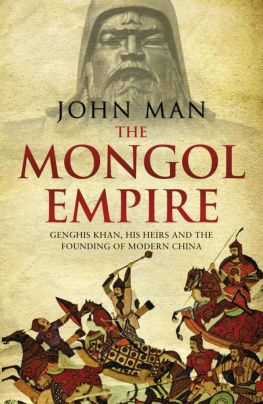This book has consumed a lot of my time and thought over the last seven years. It would have been impossible without help from many people. The original idea for it came to me at the end of the Cultures of Consumption programme, a research network of over sixty experts from fashion and geography to law and business which I had the good fortune to direct. Thanks to everyone involved, including Stefanie Pearce, my superb administrator, the advisory group and to the Arts and Humanities Research Council and the Economic and Social Research Council for funding this unique and rewarding multidisciplinary endeavour. The sociologist Elizabeth Shove and the anthropologist Rick Wilk have continued to be sources of inspiration since.
Several institutions provided me with time to research and to think. I am grateful to the European University Institute for a Fernand Braudel Senior Fellowship, to Caltech for awarding me a Moore Distinguished Fellowship, to the Sustainable Consumption Institute, Manchester, and for visiting professorships at the University of St Gallen and the cole des hautes tudes en sciences sociales, Paris. Thanks to colleagues in all these places for many stimulating conversations. Ironically, the more I followed the surge of consumption in the past, the more the present was adding new chapters to the story, as British governments decided that students, too, should be treated as consumers in an educational marketplace: that the consumer could be a citizen as well as a customer was forgotten. Financial reform and bureaucratic red tape were the results. More than ever, therefore, my deepest thanks go to my home institution, Birkbeck College, and to the Master and Dean for steering us safely through the resulting turbulence, as well as to all colleagues, students and staff for keeping Birkbeck a special place of critical inquiry, teaching and learning which makes books like this one possible.
Over the years, I have benefited from countless opportunities to try out ideas and early drafts in lectures and seminars across the globe. I am grateful to organizers and audiences for discussion and comments in New York, Pasadena, Rio de Janeiro, Helsinki, Oslo, Gothenburg, Amsterdam, London, Oxford, Cambridge, Berlin, Cologne, Munich, Paris, Florence, Delhi, Tokyo and Beijing. Additional thanks to local experts who helped me in foreign places in Beijing: Bingzhong Gao, Yunxiang Yan, the officers of the China Consumers Association, and also to Karl Gerth and Julia Lovell for their advice; in Rio: Livia Barbosa; in Helsinki: Jukka Gronow; in Tokyo: Sheldon Garon and Hiroki Shin; and in Delhi: Gurcharan Das, Anjali Garg, Sanjay Srivastava, Suresh Mishra and the National Council of Applied Economic Research.
Three scholars generously read the entire manuscript and gave me the benefit of their unrivalled knowledge of culture, economy and society: John Brewer, Martin Daunton and Gerhard Haupt. My debt to them is immense. Thanks also to Sheila Fitzpatrick and Jonathan Wiesen for reading an early draft of the chapter Age of Ideologies, and to Chris Coggins and Heike Weber for leading me to dig deeper into waste. Ed Mayo, at the then National Consumer Council (UK), generously shared with me his knowledge of consumer advocacy, as did Robin Simpson of Consumers International. Throughout, Heather Chappells has been an ingenious research assistant.
At Harper, in New York, I have had the great pleasure and privilege to work with Jonathan Jao and his team. My thanks to them for believing in this book and bringing it to American readers. In London, Stuart Proffitt and Laura Stickney have been exceptional editors, and I am grateful to them and everyone at Allen Lane/Penguin for all their support. From start to finish, David Godwin, my agent, provided just the right mix of enthusiasm and advice, and I am greatly indebted to him and everyone at DGA.
My final thanks go to my family and are immeasurable. I have been blessed with a partner who is not only caring and supportive but, on top, is the best in-house editor any writer could wish for: thorough, demanding and critical. There is not a page in this book that has not benefited from Lizza Ruddicks eye for style, clarity and reasoning. This book, however, is dedicated to our children, Julia and Oscar, who have enriched this journey of the material world with their humour, curiosity and tolerance, and who can finally breathe a sigh of relief and say: consummatum est .
Frank Trentmann
London, August 2015
FRANK TRENTMANN is a professor of history at Birkbeck College, University of London, and directed the 5 million Cultures of Consumption research program. His last book, Free Trade Nation , won the Royal Historical Societys Whitfield Prize. He was educated at Hamburg University, the London School of Economics and Political Science, and Harvard University. He has been the Fernand Braudel Senior Fellow at the European University Institute in Florence, as well as a visiting professor at Bielefeld University, the University of St. Gallen, the British Academy, and the cole des hautes tudes en sciences sociales in Paris. In 2014 he was awarded the Moore Distinguished Fellowship at the California Institute of Technology.
Discover great authors, exclusive offers, and more at hc.com
Australia
HarperCollins Publishers (Australia) Pty. Ltd.
Level 13, 201 Elizabeth Street
Sydney, NSW 2000, Australia
www.harpercollins.com.au
Canada
HarperCollins Canada
2 Bloor Street East - 20th Floor
Toronto, ON M4W 1A8, Canada
www.harpercollins.ca
New Zealand
HarperCollins Publishers New Zealand
Unit D1, 63 Apollo Drive
Rosedale 0632
Auckland, New Zealand
www.harpercollins.co.nz
United Kingdom
HarperCollins Publishers Ltd.
1 London Bridge Street
London SE1 9GF, UK
www.harpercollins.co.uk
United States
HarperCollins Publishers Inc.
195 Broadway
New York, NY 10007
www.harpercollins.com
How fashions and comforts had advanced since his youth, a sixty-year-old chronicler marvelled in 1808. Napkins were no longer just for very refined dinner guests but found on tables everywhere. Rich men paraded about town with their watches dangling from elaborate hooks. Once the habit of the few, tobacco was now smoked by everyone and stored in precious boxes. Some novelties were so recent they could be dated, like the craze for wind screens on houses that had started ten years earlier. Others could be measured by the inch. The sleeves of womens jackets used to be one foot wide. Now, it was fashionable to have them six inches wider. The height of fashion was the hundred-pleats skirt, a new style, made of crpe, which ensured it would fall very softly. But change was not confined to the upper levels of society. Even ordinary people were wearing new and curious clothing. One example was the easily removable collar that put new life into an outdated coat. Another was a short-sleeved linen jacket perfect for the summer season and, we are told, especially popular with fat people. Frivolous servants dressed up in black double-threaded silk trousers. There was, perhaps, no better sign of the wave of new fashions than the keeping of animals as trendy pets.
Our chronicler was not writing from Paris or London but from Yangzhou, a prosperous Chinese city on the lower Yangzi river, a little over 200km inland from Shanghai. In his writings, published in 1808, the poet Lin Sumen recorded a fast-changing world of goods, something that in the next two centuries came to be seen as a hallmark of Western modernity. Of course, what was fashionable on the streets of Yangzhou was not exactly the same as in a Paris salon or a London pleasure garden. Lin, for example, describes a butterfly shoe, graced by a large satin butterfly on heel and toe, with an inner lining of English wool or Ningbo silk. Popular pets were chickens from Canton and rats from the West. Still, substitute the manifold designs of English shoe-buckles for differently shaped butterflies; silver snuffboxes for tobacco holders made of jade; exotic parrots and goldfish for Western rats; add the legion of European commentators complaining of servants imitating the dress of their masters; and the differences between the two scenes rapidly fade.









